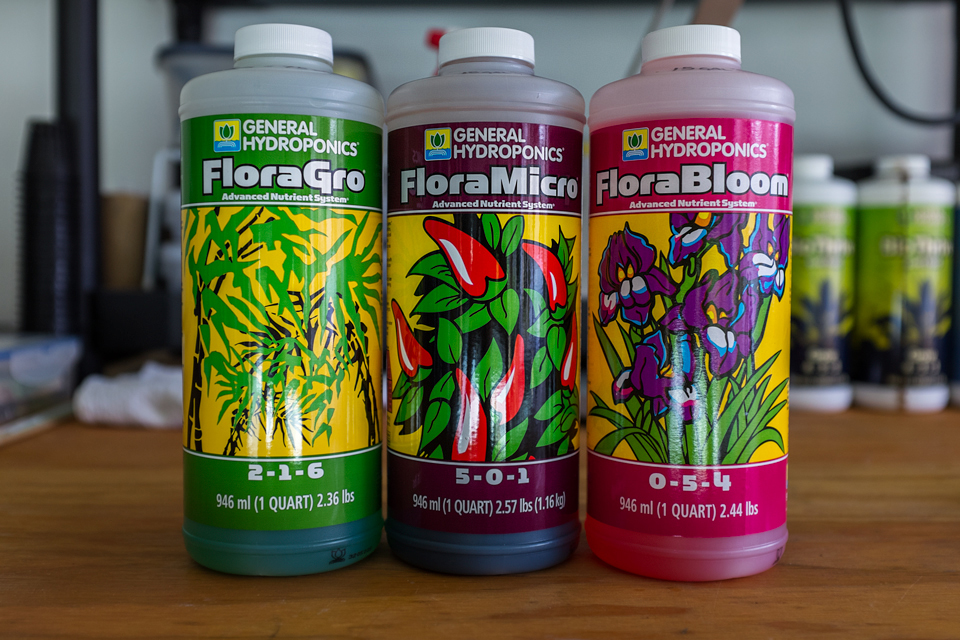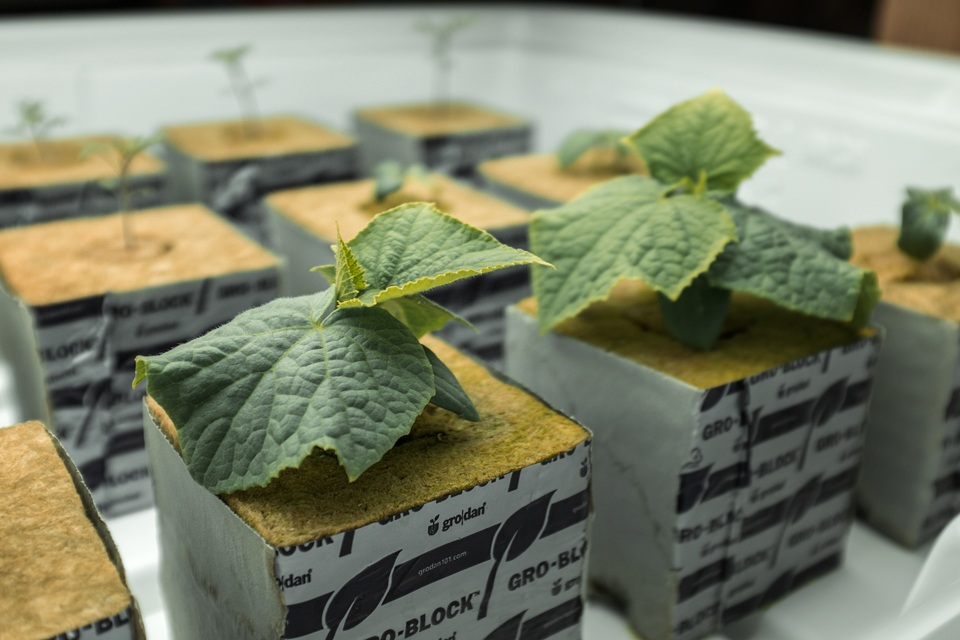Hydroponic Vegetable Garden - Update

After further research and review I decided to make the switch to the General Hydroponics Flora Series of nutrients. Since this garden represents a significant investment in time, energy, and money I decided that striving for the best possible root system was the key to sustainability. While the General Organics series of nutrients produced great results and healthy plants, I wasn't to keen on the discoloration and buildup of organic material in the root system. Long term, I just didn't know how well the plants would have done in those conditions and the lack of information available on the web was worrisome. I'll continue to use the General Organic series of nutrients for soil applications but from this point forward I'll use the General Hydroponics Series for soilless and hydroponic applications.
The General Hydroponics Flora series of nutrients is a three part system. The FloraMicro solution represents the base to the system. One thing to note is it's 5.0% Calcium (Ca) content. More on that later.
The FloraGro solution stimulates structural and vegetative growth. It also contains 0.5% Magnesium (Mg). Previously, when using the General Organics nutrients, you had to supplement Calcium and Magnesium for soilless or hydroponic applications. This is no longer needed with the Flora series of nutrients since it's built into the system.
The FloraBloom solution stimulates flower and fruit development. By mixing the three components together in varying ratio's you can make five different types of solutions to meet your growing needs. Cuttings and Seedlings, General Purpose - Mild Vegetative, Aggressive Vegetative Growth, Transition to Bloom, and Bloom and Ripening solutions. I can't wait to see the results as everything is growing like crazy!
The Red Romain Lettuce has already quadrupled in size.
The Cucumber, Bush Champion's have also quadrupled in size.
The Arugula Rocket's are also doing very well. It doesn't look like much on top since most of the activity is in the root growth below.
Seattle, WA.

